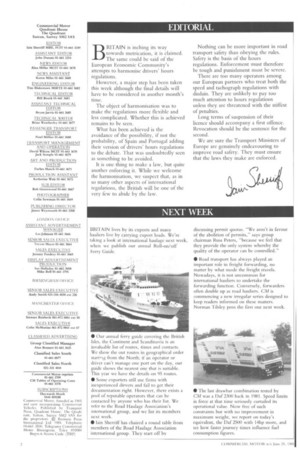EDITORIAL
Page 4

If you've noticed an error in this article please click here to report it so we can fix it.
BRITAIN is inching its way towards metrication, it is claimed. The same could be said of the European Economic Community's attempts to harmonise drivers' hours regulations.
However, a major step has been taken this week although the final details will have to be considered in another month's time.
The object of harmonisation was to make the regulations more flexible and less complicated. Whether this is achieved remains to be seen.
What has been achieved is the avoidance of the possibility, if not the probability, of Spain and Portugal adding their version of drivers' hours regulations to the debate. That was undoubtedly seen as something to be avoided.
It is one thing to make a law, but quite another enforcing it. While we welcome the harmonisation, we suspect that, as in so many other aspects of international regulations, the British will be one of the very few to abide by the law. Nothing can be more important in road transport safety than obeying the rules. Safety is the basis of the hours regulations. Enforcement must therefore be tough and punishment must be severe.
There are too many operators among our European partners who treat both the speed and tachograph regulations with disdain. They are unlikely to pay too much attention to hours regulations unless they are threatened with the stiffest of penalties.
Long terms of suspension of their licence should accompany a first offence. Revocation should be the sentence for the second.
We are sure the Transport Ministers of Europe are genuinely endeavouring to improve road safety. They must ensure that the laws they make are enforced.




































































































